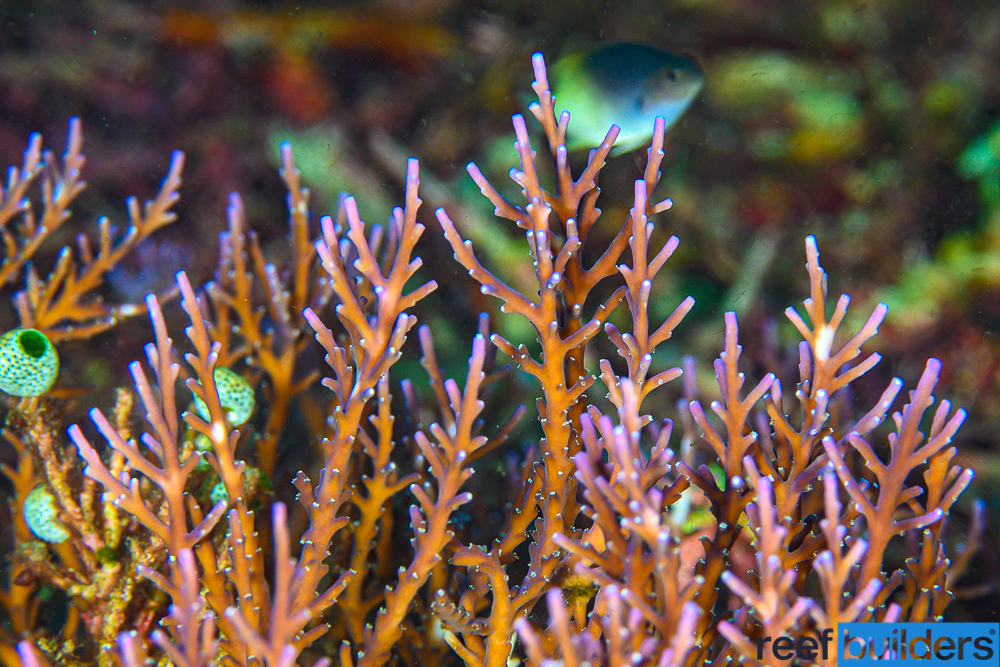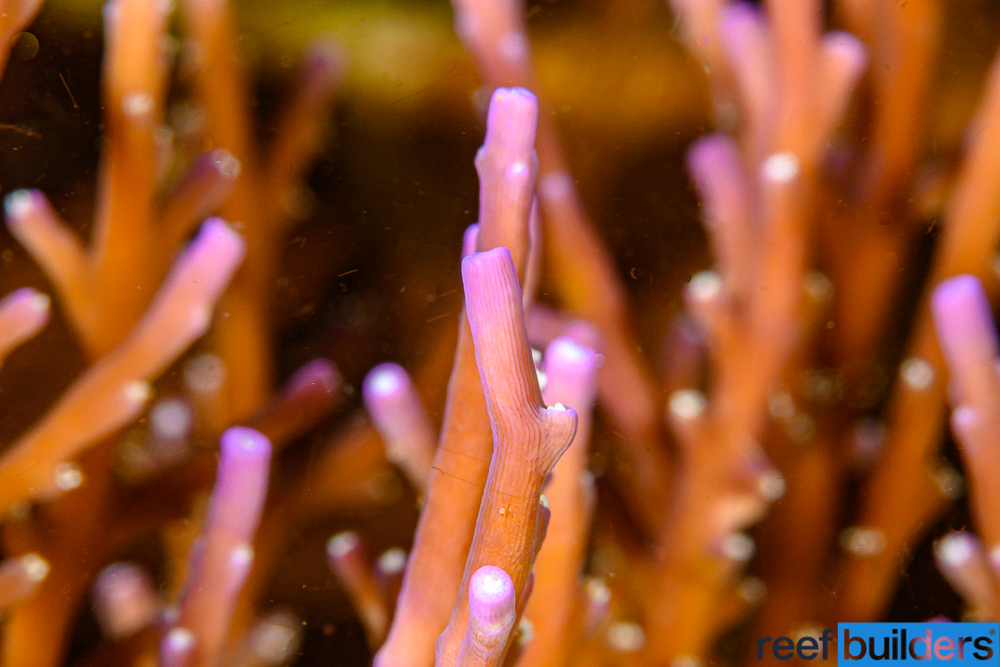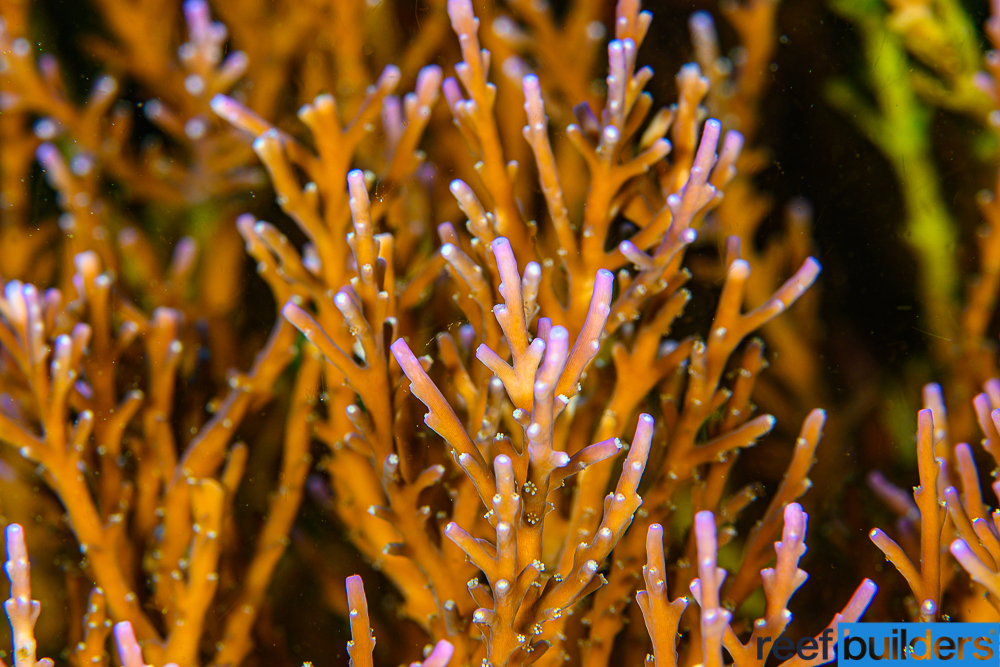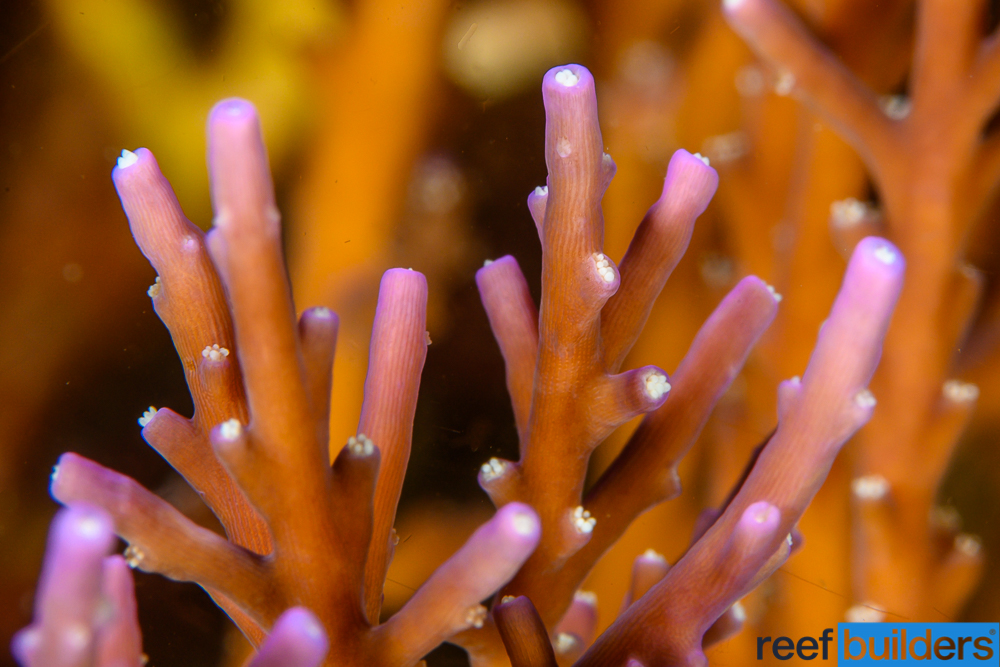It’s been a long time since we talked about this very fine coral and recently, during a dive trip, I got lucky and came across one. It’s one of our all-time favorite Acropora and this particular specimen was a lot more colorful than I remembered. Acropora derawanensis is one of the skinniest but most delicate Acropora we know.

The colonies are predominantly arborescent, composed of very thin, very delicate, not touching, and mainly vertical branches. Tertiary branches are rarely present.
Corallites
Axial corallites are long and tubular. Radial corallites are mostly small, one size or graded, with oval rounded openings, and tubular to pocket-shaped with a sharp edge.

Habitat
Just by seeing the delicate nature of the colony, it’s obvious that this species prefers a very calm, protected, turbid habitat. Often in sheltered bays between 5 m (15ft) and 30 m (90 ft), and usually in places with very dense Acropora growth. Mixed with a very high diversity and concentration of thin-growing Acropora, like A. halmaherae, A. awi , A. walindii, A. turaki, and A. carduus. Sometimes we also encounter table-like colonies of Acropora suharsonoi, A. lokani, and A. batunai.
Coloration

The usual coloration is brown stems with slightly pinkish tips. But sometimes we find some colonies with very intense purple coloration, extending a little bit further down the branches.
Maintenance
Obviously, it’s more of a deep water acro. It will do fine in LPS tanks, with PAR of around 200. It’s used to turbid water, so they shouldn’t mind a bit of feeding, especially with phytoplankton. It doesn’t like high flow. Quite a classic Deep Water Acro in terms of maintenance, with not too clean water. Quite a simple tank design and maintenance. The secret is long-term stability, so discipline in routine!
A dedicated tank, with a mix of all different species of branching and tabling deep water Acro is both an interesting sight and a challenge.



